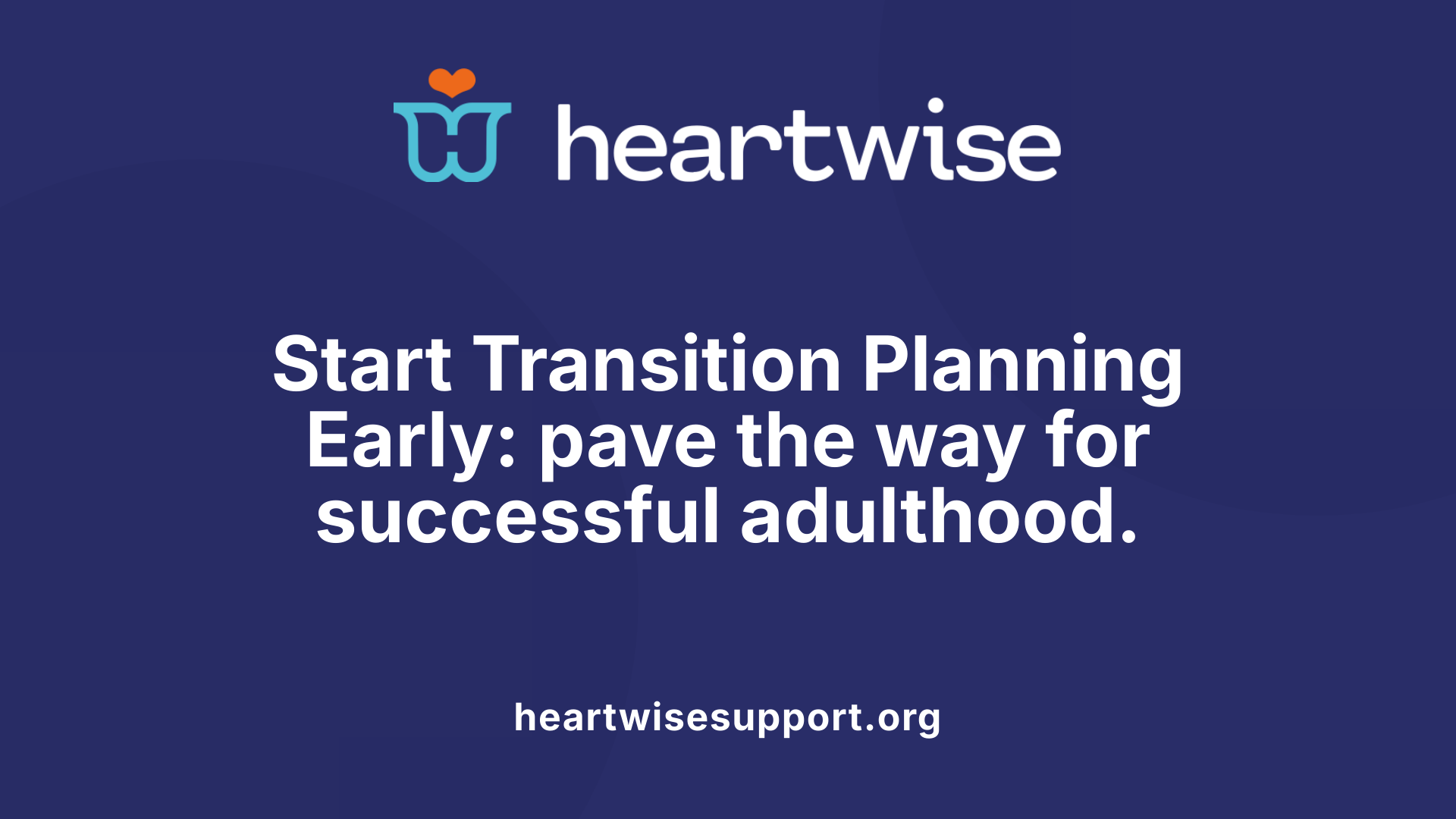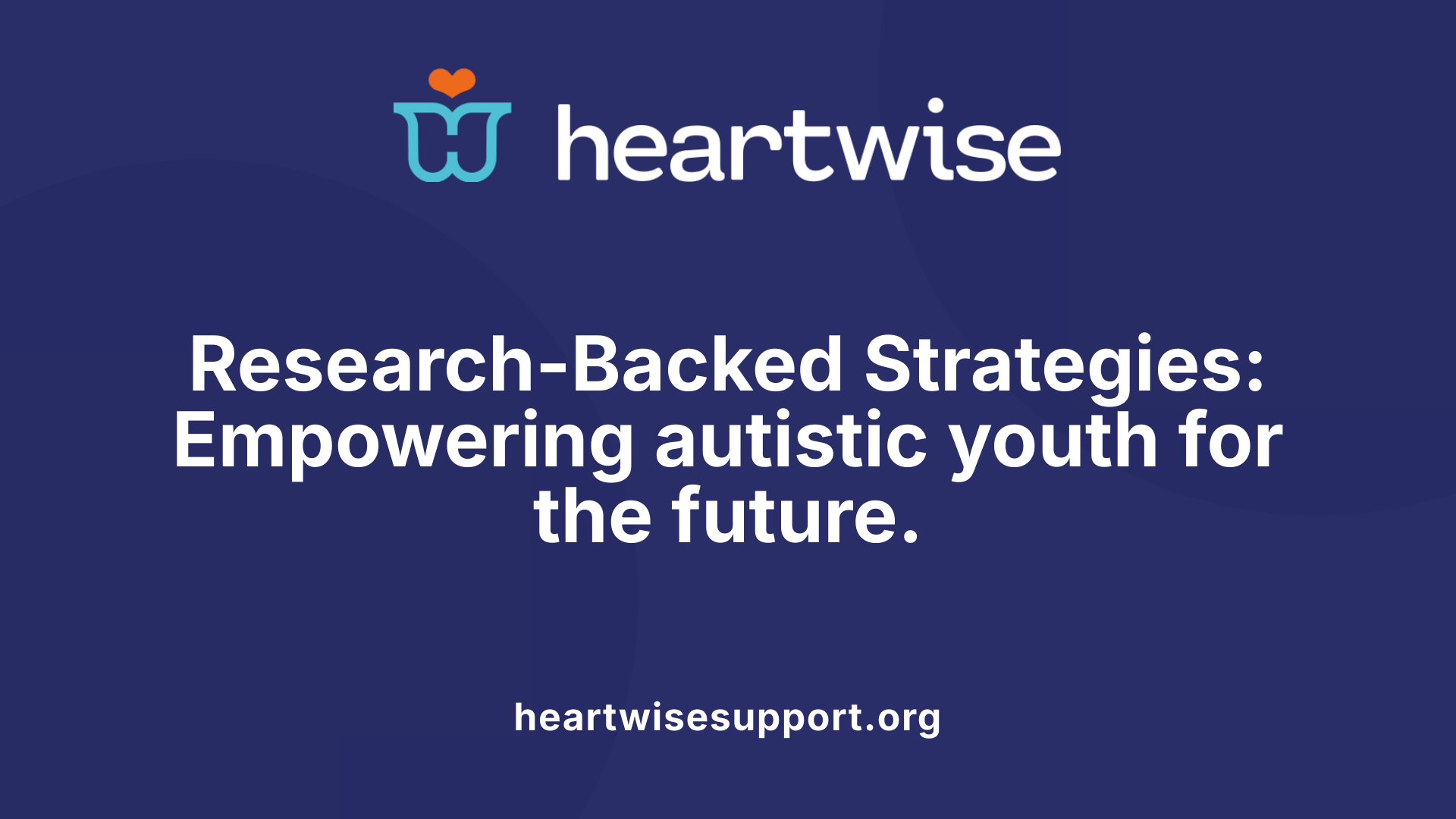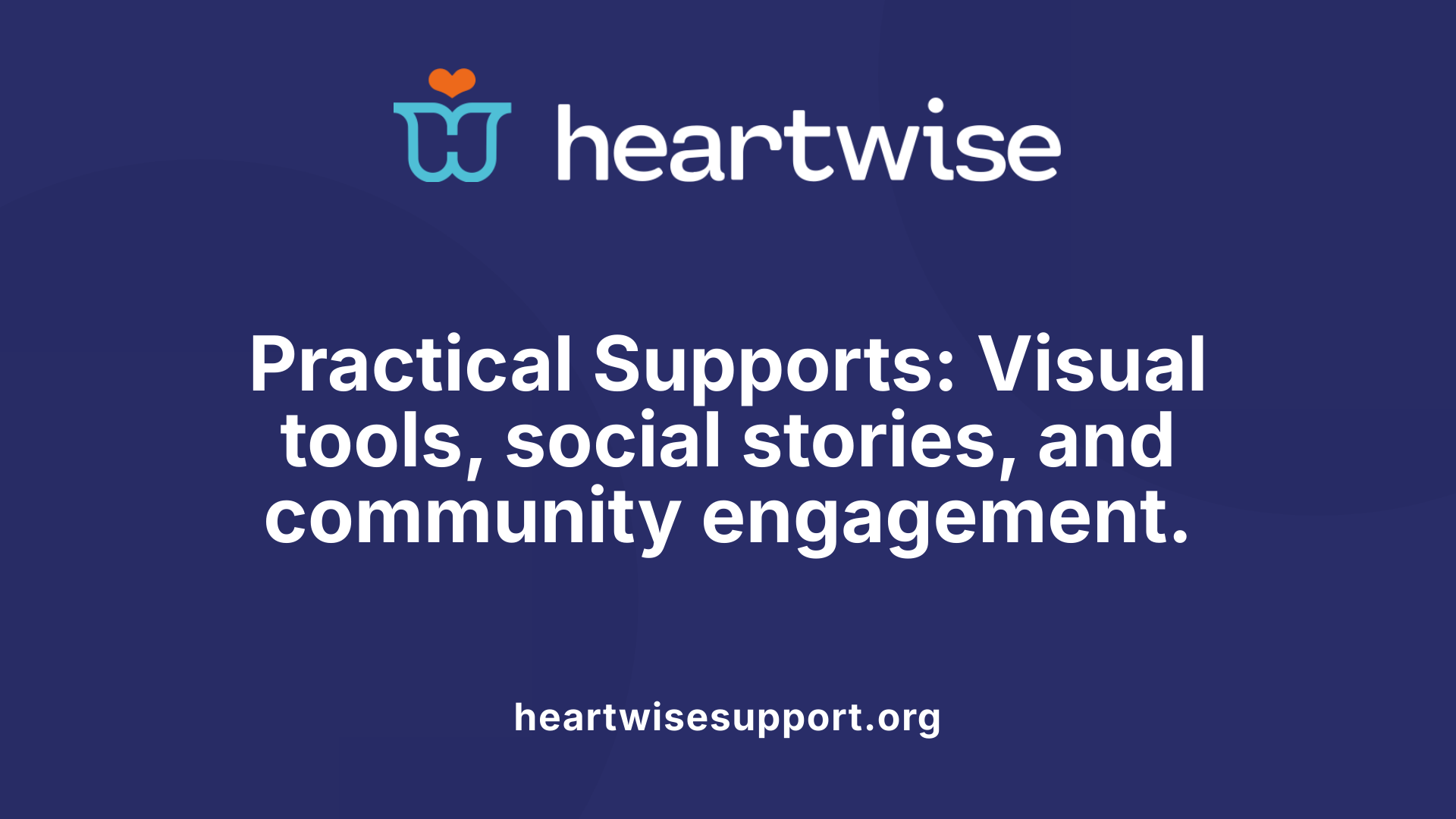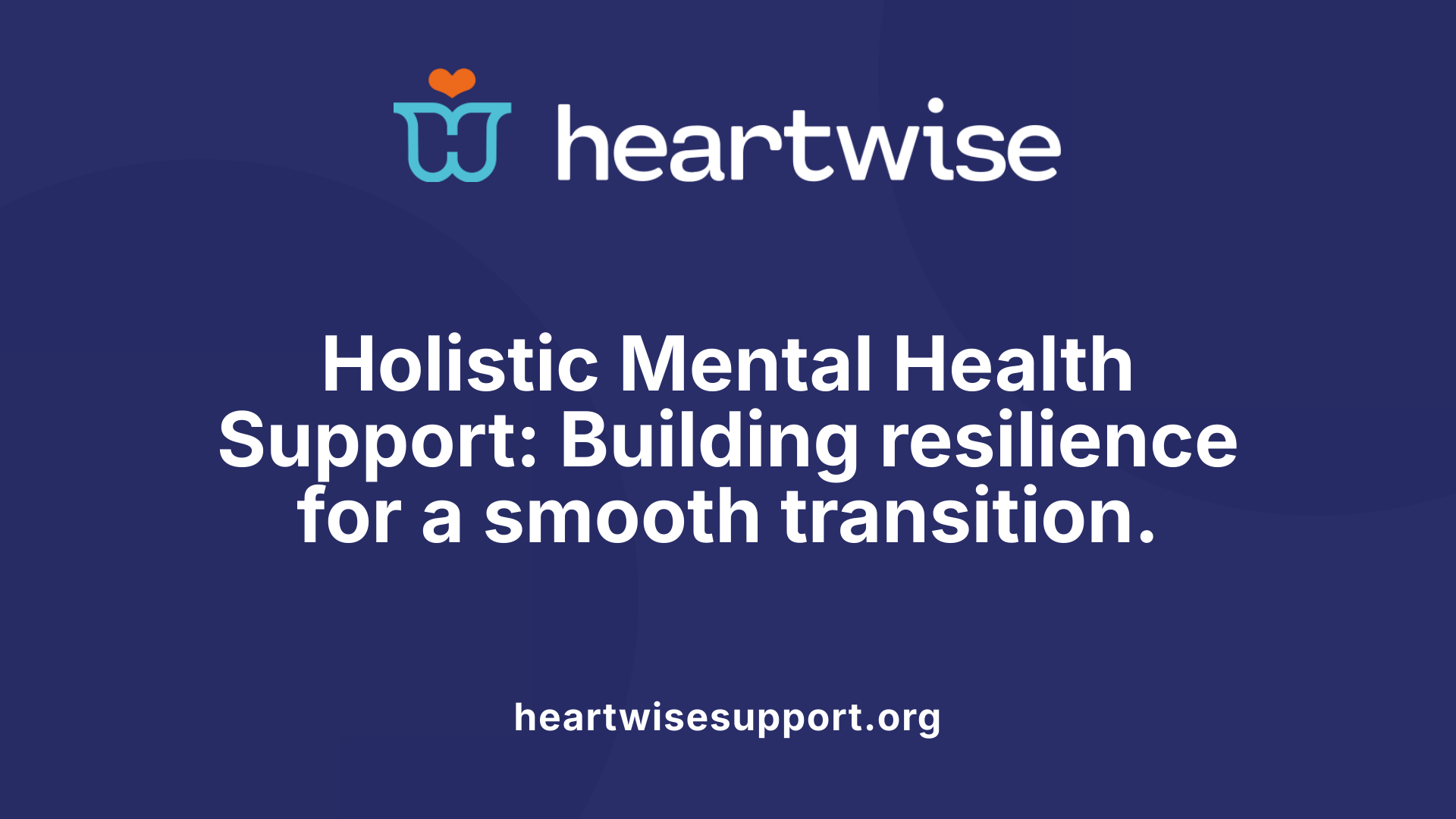Understanding the Critical Transition Period for Youth with Autism
Supporting youth with autism during their transition to adulthood is a multifaceted process that requires early planning, tailored interventions, and coordinated care. As these young individuals face challenges across education, healthcare, employment, and social domains, a comprehensive approach rooted in evidence-based practices can significantly improve their prospects for independence and quality of life. This article explores the essential components of effective transition support, highlighting resources, strategies, and policies designed to empower autistic youth on their journey into adulthood.
Early and Strategic Transition Planning in Education and Healthcare

When should transition planning begin?
Transition planning for autistic adolescents should ideally start well before they turn 16. According to the Individuals with Disabilities Education Improvement Act (IDEA), students with disabilities, including autism, are entitled to transition services beginning at age 14, with formal plans incorporated into their Individualized Education Program (IEP). However, many experts recommend beginning discussions as early as age 12 or 14 to allow ample time for comprehensive skill development in areas such as employment, independent living, and health management.
Early planning helps address the physical, behavioral, and healthcare changes typical of adolescence, as well as legal and social transitions that occur after age 18. Preparing ahead gives families and youths more opportunities to access resources, develop self-advocacy skills, and set realistic, achievable goals. It also fosters co-operation among educators, healthcare providers, and families to create a smooth pathway into adulthood.
What legal and policy considerations are involved in transition planning?
Legal frameworks like IDEA set the foundation for transition services, mandating that students with disabilities have transition plans by age 16. These plans include goals related to employment, independent living, and community participation. As students approach 18, legal decisions about guardianship and supported decision-making come into focus.
Supported decision-making options are increasingly promoted as alternatives to guardianship, empowering youth to make their own choices while receiving support as needed. Additionally, laws such as the Americans with Disabilities Act (ADA) protect employment and housing rights for adults with autism.
State policies and local regulations may vary, impacting the availability and scope of services. Variability across different regions is evident; for example, transition plan completion rates differ widely among states, reflecting differences in funding, resources, and policy implementation. Understanding these legal considerations enables families and professionals to advocate effectively for access to necessary programs and supports.
What healthcare considerations are essential during transition?
Preparing for healthcare transition involves early discussions about puberty, health management, and adult healthcare services. Pediatricians are advised to begin conversations with teens around age 12, focusing on developing self-management skills like making appointments, understanding prescriptions, and communicating health needs.
Maintaining regular check-ups with healthcare providers ensures ongoing health support and continuity. During these visits, teens should be encouraged to participate in shared decision-making to foster independence and self-advocacy. Transition to adult healthcare providers also involves ensuring insurance coverage, understanding legal health rights, and arranging for providers experienced with autism.
Resources such as the Got Transition website offer toolkits, timelines, and training modules to support these efforts. Additionally, understanding the importance of behavioral health screening and mental health support is critical, as co-occurring psychiatric conditions like anxiety and depression often impact transition success.
How can caregivers and families help autistic teens and young adults prepare for adulthood?
Caregivers and families play a proactive role by initiating early transition conversations and utilizing available resources. Starting around age 12, they should work with schools to develop detailed transition plans that include education, employment, and independent living objectives.
Engaging the teens themselves in these discussions helps build self-awareness and self-advocacy skills. Families can encourage participation in community-based activities, social skills groups, and vocational training programs, such as Project SEARCH, to promote real-world readiness.
Utilizing guides like Autism Speaks' Transition Toolkit, Household Chores as Parallel Skills, and community assessments enhances understanding of necessary skills and resources. These tools support learning in areas such as money management, transportation, and social interactions.
Ongoing collaboration with healthcare providers, legal professionals, and educational teams ensures medical needs are managed and legal rights are protected. Encouraging teens to practice decision-making and self-advocacy fosters confidence and independence, paving the way for a successful transition into adulthood.
What resources, tools, or programs are available to assist families, caregivers, and professionals?
A variety of resources support the transition process for autistic youth. The U.S. Department of Education’s National Technical Assistance Center on Transition (NTACT) provides evidence-based practices and online training modules for educators and service providers.
Autism Speaks offers comprehensive tools such as the Transition Toolkit and Postsecondary Educational Opportunities Guide, which help families plan for education and employment paths. Organizations like Easterseals and the PACER Center provide employment services, housing supports, and legal rights information.
Specialized programs like Project SEARCH and the Transition-to-Work initiative focus on job skill development and workplace experiences tailored for youth with autism. Postsecondary programs, including those offered by Think College, facilitate access to college accommodations and support services.
Assessment tools such as the Community-Based Skills Assessment (CSA) help identify strengths and areas for growth, guiding individualized planning. Webinars, local community programs, and therapist-led social skills groups further support skill development in daily living, socialization, and self-advocacy.
In sum, utilizing these resources—alongside tailored interventions and continuous support—optimizes the chances of a successful transition to adulthood for autistic individuals.
Evidence-Based Practices and Models for Transition Support

What are some evidence-based practices and models for supporting successful transition for autistic youth?
Supporting autistic youth in transitioning to adulthood requires approaches grounded in research and proven effectiveness. Several strategies have emerged as validated methods to foster independence and post-secondary success.
Visual supports, social stories, and video modeling are widely used to teach social skills, daily routines, and understanding of social cues. These tools help make abstract concepts concrete and accessible, promoting better comprehension and application.
Self-monitoring techniques empower teens to develop self-awareness about their behaviors and progress towards goals. Instructional methods like chaining break down complex tasks into manageable steps, while community-based instruction ensures learning occurs in real-world settings. Computer-assisted learning and mnemonic devices further support skill acquisition, particularly for vocational and daily living tasks.
Programs like STEPS (Stepped Transition in Education Program for Students with ASD) exemplify comprehensive, evidence-based models. These programs focus on enhancing self-determination, self-regulation, and psychosocial readiness—areas critical for successful adult independence. Rigorous research indicates that students involved in STEPS show marked improvements in transition preparedness, which are sustained over time.
Implementing these practices effectively involves multidisciplinary teamwork, fidelity checks, and individualized planning aligned with legal frameworks such as IDEA and ESSA. Technology, simulation-based activities, and tailored interventions ensure that youths develop practical skills necessary for employment, community engagement, and independent living.
Supporting Strategies and Practical Approaches

What are effective strategies to support youth with autism during the transition to adulthood?
Supporting young people with autism as they move into adulthood requires a combination of tailored interventions and practical supports. Visual supports are particularly effective; these include visual schedules, timers, countdown systems, and visual cues that help increase predictability and reduce anxiety. Such tools prepare individuals for changes and upcoming activities, making transition periods smoother.
Social stories and narratives also serve as valuable resources. These are individualized, positive explanations of new routines or environments, designed to enhance understanding and reduce fears associated with change. They help improve social comprehension and foster confidence in navigating adult settings.
Building personalized routines and skill-building activities are central to developing independence. These programs focus on daily living skills, self-care, transportation, and employment-related tasks, providing a structured approach to competence and confidence.
Reinforcement and consistent practice are essential. Repeating activities and gradually increasing complexity help solidify new skills. Collaboration with the individual, family, educators, and therapists to develop individualized plans ensures that support strategies meet personal needs, sensory sensitivities, and preferences, thereby diminishing stress and challenging behaviors.
Furthermore, integrating real-world experiences such as supported employment, community activities, and social engagement opportunities enhances practical skills and social integration. These experiences help youth apply learned skills in meaningful contexts, encouraging ongoing participation and success in adult life.
Overall, combining visual supports, social narratives, tailored routines, and community involvement creates a comprehensive framework supporting autonomous transition.
Mental Health and Support Systems in Transition

How can mental health support systems be integrated into transition planning for autistic youth?
Effectively incorporating mental health support into transition planning for autistic youth involves a coordinated, holistic approach. This begins with early screening for common mental health conditions such as anxiety and depression, which are prevalent among autistic adolescents. Healthcare providers, educators, therapists, and families must work together to create personalized plans for mental health care.
Proactive strategies include establishing ongoing communication between pediatric and adult healthcare providers to ensure continuity of mental health services. Transition programs can benefit from designating a transition coordinator or case manager who focuses on mental health concerns, facilitating smooth service transfer and ongoing support.
Community resources play a crucial role. Organizations like Autism Speaks, Easterseals, and government initiatives offer specific tools and programs aimed at improving emotional and social well-being. These include social skills groups, behavioral therapies like cognitive-behavioral therapy (CBT), and medication options tailored to individual needs.
Supporting data highlights the importance of addressing disparities in mental health service access across different regions and populations. Using data-driven planning helps identify underserved areas and implement targeted interventions to promote equitable access.
Ultimately, a person-centered strategy that emphasizes early intervention, integrated care, and community involvement can foster resilience and emotional stability, paving the way for successful transition into adulthood.
What challenges do mental health issues pose during transition, and how can they be addressed?
Mental health issues can create significant hurdles during the transition to adulthood for autistic youth. Elevated levels of anxiety, depression, and stress often contribute to behavioral challenges, social withdrawal, and difficulty with independence.
These challenges are compounded by potential gaps in services, limited access to mental health providers, and lack of tailored interventions. Without early detection and appropriate treatment, mental health problems can escalate, delaying progress towards adult independence.
Addressing these challenges begins with early recognition. Regular mental health screening during healthcare visits and school assessments can help identify issues before they worsen. Interventions such as social skills training, behavioral therapies, and medication management should be incorporated into individualized transition plans.
Building resilience requires supporting self-advocacy skills, teaching coping strategies, and fostering family and community engagement. Ensuring access to consistent mental health services is vital; this can be achieved through partnerships with mental health professionals, community organizations, and support groups.
Furthermore, educating families and care providers about the signs of mental health crises and available resources can reduce delays in intervention. Creating a supportive environment that promotes open dialogue about mental health can empower autistic youth to seek help when needed.
In summary, the integration of mental health support into the transition process is essential for promoting well-being, preventing crisis situations, and facilitating a smooth move into adult life.
A Coordinated Approach for a Successful Transition
The transition from adolescence to adulthood presents both opportunities and challenges for youth with autism. Success hinges on early, comprehensive planning that incorporates evidence-based practices, tailored interventions, legal and policy awareness, and strong mental health support systems. Resources such as specialized toolkits, community programs, and legal frameworks empower families and professionals to create individualized plans that promote independence, employment, social inclusion, and overall well-being. Collaborative efforts across healthcare, education, and community sectors are essential to bridge gaps and address disparities, ensuring that autistic young adults are equipped to navigate adulthood confidently. With proactive planning, ongoing support, and advocacy, we can build a future where every autistic individual has the opportunity to lead a fulfilling life.
References
- Transition to Adulthood | Autism Speaks
- Improving Transition to Adulthood for Students with Autism
- Helping Teens on Autism Spectrum Transition to Adulthood - AAP
- Transition Resources for Autism - Websites and Program | IACC
- Healthcare Needs and Transition Planning for Youth with Autism
- Entering Adulthood - Autism Science Foundation
- Supporting the Transition to Adulthood | CSESA
- Transition to Adulthood - Autism Research Institute
- Transition to Adulthood for Students with ASD
- Transition to Adulthood - Center for Autism & Neurodevelopmental ...











